Inti Raymi: The Eternal Radiance of the Inca Sun God’s Sacred Feast
Inti Raymi transcends mere reenactment; it is the living heartbeat of the Tahuantinsuyo’s memory. Cusco’s most iconic celebration draws thousands every June 24th, yet its essence lies in the Andean world’s deepest roots, forged by conquest and unbroken cultural resistance.
The Ancestral Inti Raymi: Eight Days of Devotion to Inti
Established by the visionary Inca Pachacútec, Inti Raymi marked the austral winter solstice (June 21 – 24), the start of the Andean New Year. Its purpose was vital: to thank Inti (Sun God) for the harvest and invoke another cycle of abundance, ensuring the empire’s Allin Kawsay (Good Living).
- Sacred Magnitude: The original Inti Raymi was an 8-day ceremonial cycle, an immersion into the divine, far surpassing today’s condensed version.
- Ancestral Witnesses: At dawn, the sacred mallquis, mummified Inca ancestors, were brought forth to stand among the living, bridging centuries in ritual presence.
- Ascendant Chants and Offerings: Sacred Quechua chants began softly, rising in power with the ascending sun. Chicha (corn beer) was poured, and coca leaves scattered as liquid and vegetal offerings along the ritual route.
- Sacrifice and Renewal: At solar zenith, llama meat was burned as a symbolic sacrifice. On the eighth day, the Sapa Inca performed the climax: ritually tilling the earth with a golden plow (taclla), a sacred act ensuring fertility under Inti Raymi’s blessing.
- Bartolomé de Segovia’s Testimony: The chronicler Bartolomé de Segovia witnessed one of the last authentic Inti Raymi ceremonies before its erasure. His account remains invaluable, yet fragmented, leaving profound liturgical nuances forever lost.
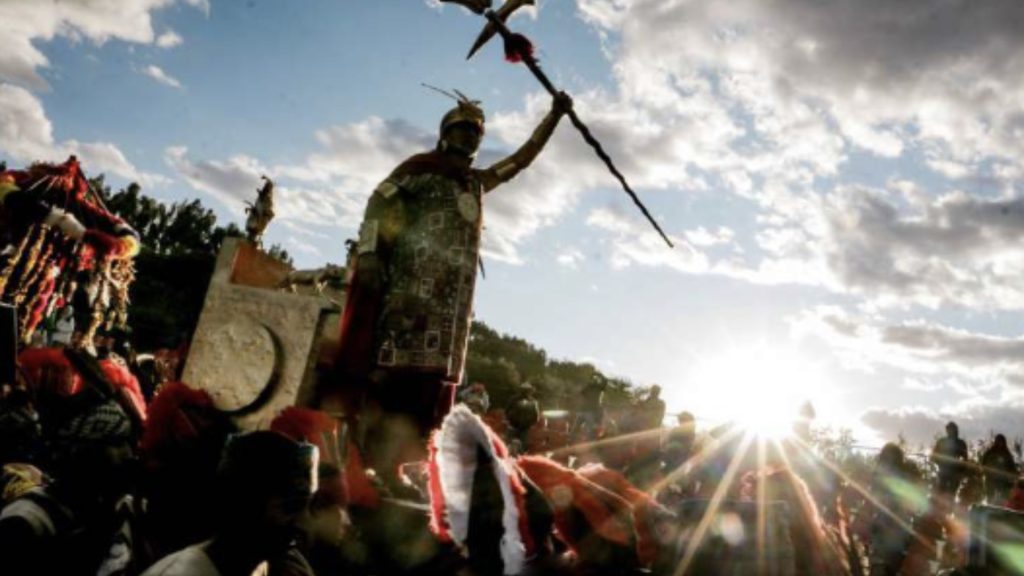
The Suppression of Inti Raymi: An Indomitable Rite
The Spanish conquest launched a crusade against Andean religion. While other rites survived through painful syncretism (fusing indigenous rituals with Catholic faith), Inti Raymi’s majesty made it irreplaceable.
- The Corpus Christi Parallel: The procession of Inca mummies (mallquis) was transformed into Corpus Christi. Rumors suggest mallquis were hidden inside Catholic icons, allowing covert ancestral veneration.
- Inti Raymi’s Irreducibility: Its scale (8 days), the Sun’s centrality as supreme deity (Inti), the Sapa Inca’s divinity, and liturgical complexity defied Christian parallels. Deemed incompatible for its «intense ceremonial level,» Inti Raymi was banned, systematically persecuted, and eradicated for centuries.
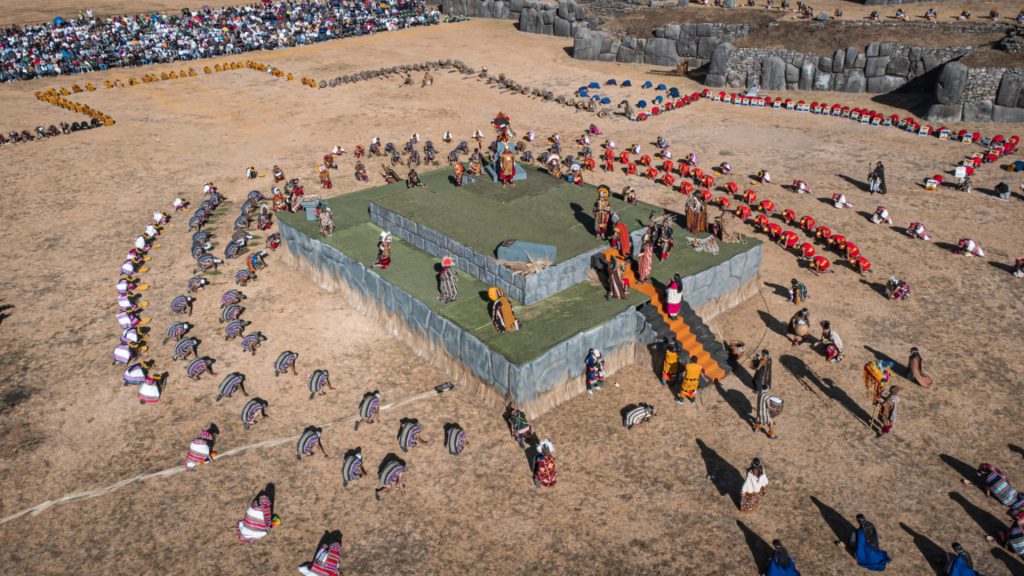
The Sun Returns: Faustino Espinoza and the Revival of Andean Memory
After centuries of silence, Inti Raymi resurged in 1944, driven by Cusco intellectuals Faustino Espinoza Navarro (who played the first Inca) and Humberto Vidal Unda.
- Rising from the Ashes: Using chronicles (like Segovia’s) and Quechua oral tradition, Espinoza Navarro recreated a theatrical Inti Raymi. Aware of historical gaps, his goal was to revive the ritual’s spirit, not replicate it archaeologically.
- Modern Inti Raymi’s Structure:
- Qoricancha (Sun Temple): The sacred epicenter where Inti Raymi begins at dawn with offerings to Inti.
- Plaza de Armas (Huacaypata): Delegates from the Four Suyos (empire regions) emerge before the Inca’s arrival, reactivating Tahuantinsuyo’s sacred geography.
- Sacsayhuamán: The Inti Raymi’s monumental heart. Here, the main rite unfolds: speeches in Quechua, ancestral music (pututos, quenas, drums), mass dances, and symbolic offerings. The past and present converge powerfully.
- Quechua: The Soul of Inti Raymi: Using Quechua exclusively is no folklore gimmick, it is political and cultural reclamation, resisting linguistic erasure.
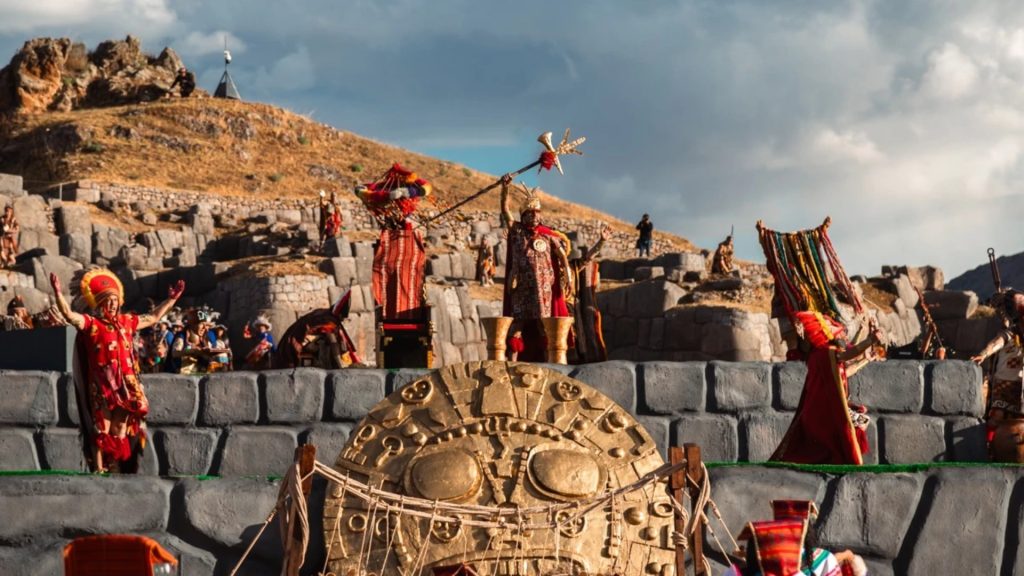
Inti Raymi Today: Living Memory and Cultural Affirmation
The modern Inti Raymi is inevitably a historical portrayal. It omits the 8-day cycle, animal sacrifice, and golden plow ritual. Yet its power transcends accuracy:
It is a profound act of collective memory and cultural resistance. A public reaffirmation of Andean pride, a reclamation of sacred space (physical at Qoricancha/Sacsayhuamán; spiritual in identity), and a living transmission of cosmology. Every Quechua word, every ritual movement in Inti Raymi, defies oblivion.
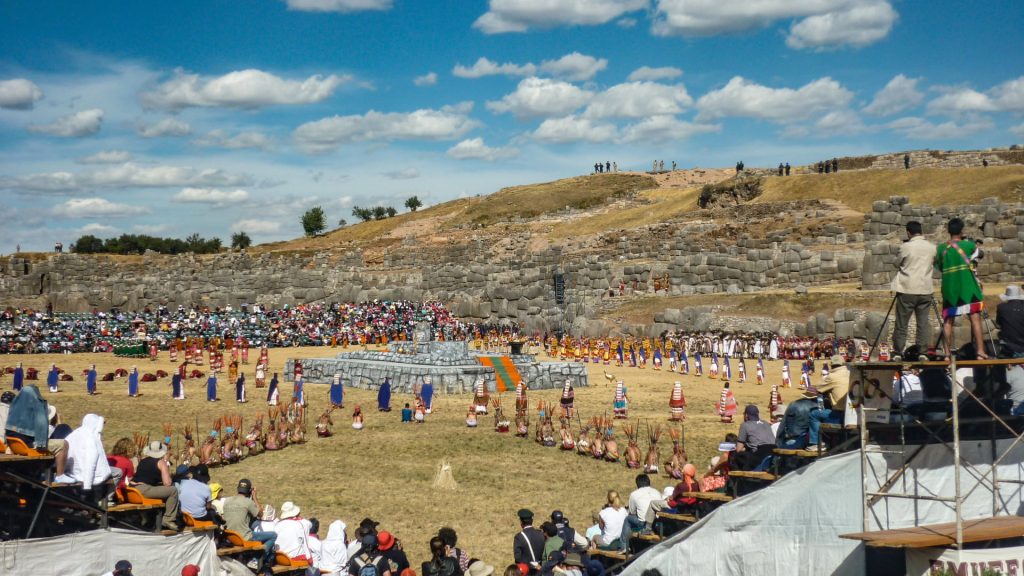
Essential Planning and Code of Respect
Experiencing Inti Raymi demands preparation and reverence:
- Core Date: The main event occurs on June 24 (national holiday). Activities span Cusco’s three stages, with cultural events days prior.
- Tickets for Sacsayhuamán: Non-negotiable: Book 4 – 6+ months ahead. Sold via Cusco’s Municipal Festivities Company (EMUFEC) or authorized agencies. Tribune access requires valid tickets.
- Cultural Respect:
- Silence: During key rituals (invocations, Quechua speeches, offerings).
- Compliance: Follow staff/organizer instructions.
- Ethical Photography: Ask permission before close-ups of individual participants. Avoid disruptive flashes.
- Observant Demeanor: No loud talk, interruptions, or distractions. Inti Raymi demands contemplative respect.
- Altitude Acclimatization (Cusco: 3,400m): Arrive 1 – 2 days early. Hydrate, drink coca tea, avoid strenuous effort.
- Weather-Appropriate Attire: June is Andean winter: sunny days but bitterly cold mornings/evenings, especially at windy Sacsayhuamán. Wear thermal layers, windproof jacket, hat, gloves, scarf, high-SPF sunscreen, sunglasses. Sturdy, grippy footwear is essential.
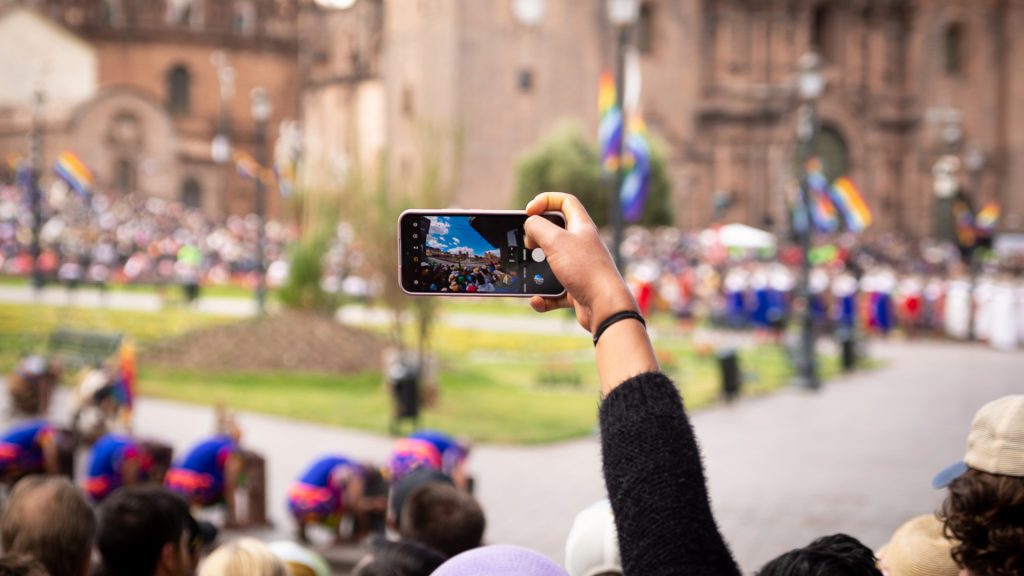
For centuries, a powerful eight-day ceremony was banned for being too deeply rooted in Inca identity. In 1944, Faustino Espinoza Navarro led its return. More than a tourist event, it became a bold act of cultural rebirth. Witnessing the modern Inti Raymi means witnessing a people’s determination to keep alive the flame of their Sun God and their imperial memory. That sacred fire, buried for generations, resurfaces every June 24th, proof that the cultural spirit, even silenced, can never be completely extinguished.



